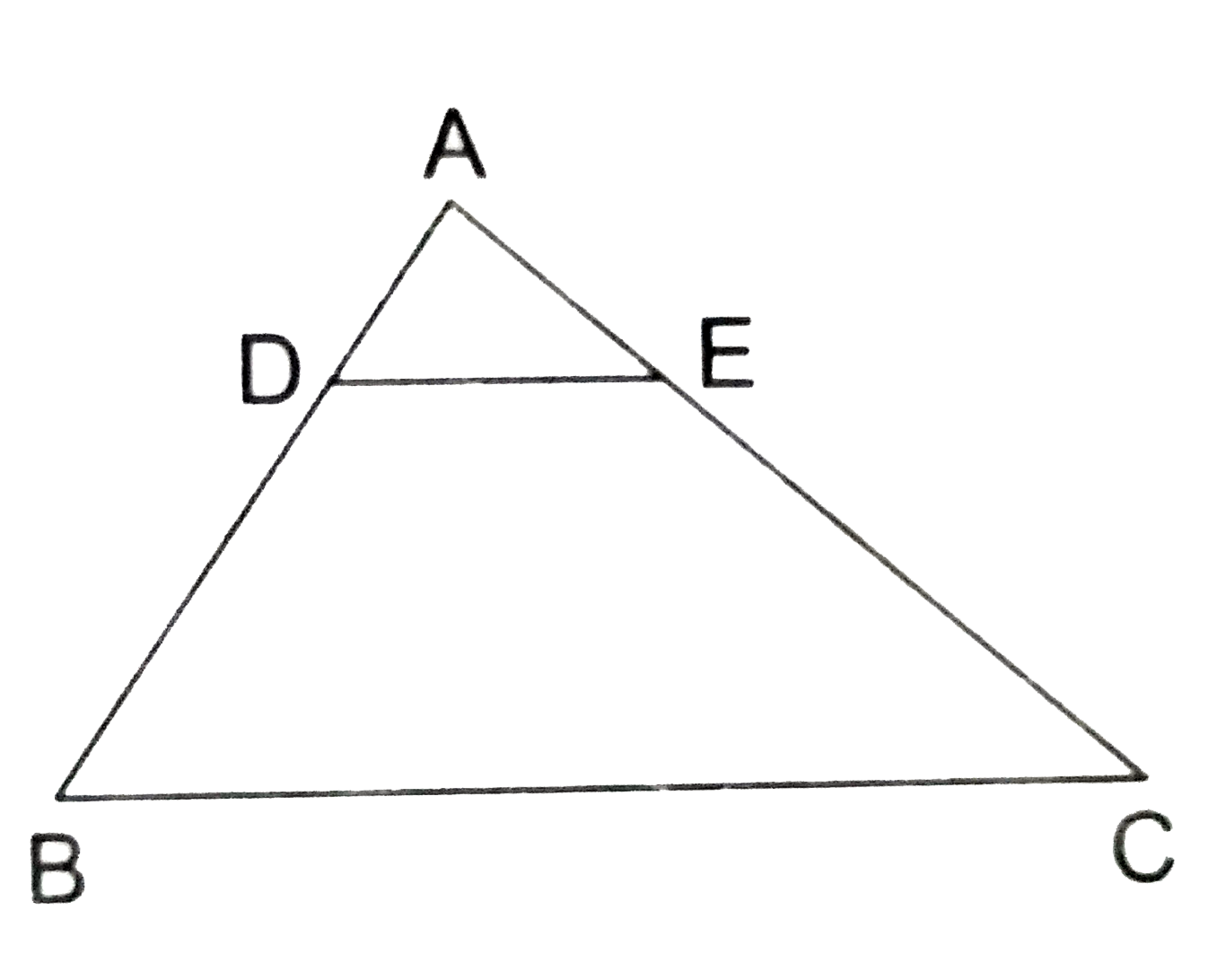P and Q are points on sides AB and AC respectively of ΔABC . If AP = 3 cm , PB = 6 cm , AQ = 5 cm and QC = 10 , show that BC =3PQ .
The correct Answer is:=3PQ .
To show that BC=3PQ given the points P and Q on the sides AB and AC of triangle ABC, we can use the concept of similar triangles and the properties of proportional segments.
1. Identify the segments:
- Given AP=3cm, PB=6cm, AQ=5cm, and QC=10cm.
- Therefore, AB=AP+PB=3+6=9cm and AC=AQ+QC=5+10=15cm.
2. Set up the ratios:
- The ratio of the segments on side AB is APPB=36=12.
- The ratio of the segments on side AC is AQQC=510=12.
3. Use the property of similar triangles:
- Since APPB=AQQC, by the Basic Proportionality Theorem (or Thales' theorem), the line segment PQ is parallel to BC.
4. Express BC in terms of PQ:
- By the properties of similar triangles, we have:
PQBC=APAB=39=13
- Rearranging this gives:
BC=3⋅PQ
5. Conclusion:
- We have shown that BC=3PQ.
- Given AP=3cm, PB=6cm, AQ=5cm, and QC=10cm.
- Therefore, AB=AP+PB=3+6=9cm and AC=AQ+QC=5+10=15cm.
- The ratio of the segments on side AB is APPB=36=12.
- The ratio of the segments on side AC is AQQC=510=12.
- Since APPB=AQQC, by the Basic Proportionality Theorem (or Thales' theorem), the line segment PQ is parallel to BC.
- By the properties of similar triangles, we have:
PQBC=APAB=39=13
- Rearranging this gives:
BC=3⋅PQ
- We have shown that BC=3PQ.
Topper's Solved these Questions
- TRIANGLES Book:MTG IIT JEE FOUNDATIONChapter:TRIANGLES Exercise:NCERT Section Exercise 6.1
Explore 7 Videos
- TRIANGLES Book:MTG IIT JEE FOUNDATIONChapter:TRIANGLES Exercise:NCERT Section Exercise 6.2
Explore 12 Videos
- TRIANGLES Book:MTG IIT JEE FOUNDATIONChapter:TRIANGLES Exercise:Olympiad /HOTS Corner
Explore 15 Videos
- SURFACE AREAS AND VOLUMESBook:MTG IIT JEE FOUNDATIONChapter:SURFACE AREAS AND VOLUMESExercise:OLYMPIAD/HOTS CORNER
Explore 20 Videos
Similar Questions
Knowledge Check
D and E are two points on the sides AC and BC respectively of ΔABC such that DE=18cm,CE=5cm and ∠DEC=90∘. If tan ∠ABC=3.6, then AC:CD=
ABC:2CEB2CE:BCC2BC:CEDCE:2BCIn ΔABC D and E are the points on sides AB and AC, respectively, such that DE || BC. If AD = 4 cm, BC = 5 cm. DC = 10 cm and AB = 15 cm. then the sum of the lengths of DE and EC is:
AA. 20 cmBB. 15 cmCC. 21 cmDD. 18 cm
If P and Q are points on the sides AB and AC respeactively of △ABC, if PQ||BC,l AP= 2 cm , AB = 6 cm and AC= 9 cm find AQ.
View SolutionIf D and E are points on the sides AB and AC respectively of DetlaABC such that AB=5.6cm,AD=1.4cm,AC=7.2cmandAE=1.8cm. Show that DE∣∣BC.

View SolutionP and Q are the points on sides AB and AC respectively of a ΔABC , such that PQ||BC .If AP∣PB=2:3 and AQ=4 cm , then the length of AC is ….. Cm .
View SolutionIn a triangle ABC, P and Q are points on AB and AC, respectively, such that AP=1 cm, PB=3 cm, AQ=1.5 cm, and CQ=4.5 cm. If the area of △APQ is 12cm2, then find the area of BPQC

View Solutionif D and E are points on the sides AB and AC of a ΔABC. Such that AB=12 cm, AD=8 cm, AE=12 cm, AC= 18 cm. show that DE||BC.
View SolutionIn ΔABC,D and E are points on the sides AB and AC respectively. Find whether DE||BC if
(i) AD= 3cm , BD = 4.5cm, AE = 4cm, AC= 10cm
(ii) AB=7 cm , BD = 4.5cm, AE = 3.5 cm, CE= 5.6cm.

View Solution
